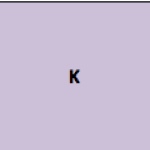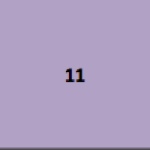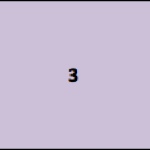Information
-
Audit Title
-
Document No.
-
Client / Site
-
Conducted on
-
Prepared by
-
Location
-
Personnel
Reading Literature
-
Cite textual evidence to support analysis of what the text says explicitly as well as inferences drawn from the text.
-
Determine a theme or central idea of a text and analyze its development over the course of the text; provide an objective summary of the text.
-
Analyze how particular elements of a story or drama interact.
-
Determine the meaning of words and phrases as they are used in a text, including figurative and conntoative meanings; analyze the impact of rhymes and other repetitions of sounds on a specific verse or stanza.
-
Analyze how a drama's or poem's form or structure contributes to its meaning.
-
Analyze how an author develops and contrasts the points of view of different characters or narrators.
-
Compare and contrast a written story, drama, or poem to its audio, filmed, staged, or multimedia version, analyzing the effects of techniques unique to each medium.
-
Compare and contrast a fictional portrayal of a time, place, or character and a historical account of the same period as a means of understanding how authors of fiction use or alter history.
-
Read and comprehend literature, including stories, dramas, and poems of appropriate complexity.
Reading informational texts
-
Cite textual evidence to support analysis of what the text says explicitly as well as inferences drawn from the text.
-
Analyze the interactions between individuals, events, and ideas.
-
Determine the meaning of words and prhases as they are used in a text, including figurative, connotative, and technical meanings; analyze the impact of a specific word choice on meaning and tone.
-
Analyze the structure an author uses to orgnaize a text, including how the major sections contribute to the whole and to the development of ideas.
-
Determine an author's point of view or purpose in a text and analyze how the author distinguishes his or her position from that of others.
-
Compare and contrast text to an audio, video, or multimedia version of the text, analyzing each medium's portrayal of the subject.
-
Trace and evaluate the argument and specific claims in a text, assessing wheter the reasoning is sound and evidence is relevant and sufficient to support the claims.
-
Read and comprehend literary nonfiction in the grades 6-8 complexity band proficiently, with scaffolding as needed at the high end of the range.
Writing
-
Write arguments to support claims with clear reasons and relevant evidence.
-
Write informative/explanatory texts to examine a topic and convey ideas, concepts, and ifnormation through the selection, organization, and analysis of relevant content.
-
Write narratives to develop real or imagined experiences or events using effective technique, relevant descriptive details, and well-structured event sequences.
-
Use technology to produce and publish writing and link to and cite sources.
-
Develop and strengthen writing as needed by planning, revising, editing, rewriting, or trying a new approach, focusing on how well purpose and audience have been addressed.
-
Produce clear and coherent writing in which the development and organization are appropriate to task, purpose, and audience.
-
Conduct short research projects to answer a question, drawing on several sources and generating additonal related, focused questions for further research and investigation.
-
Gather relevant information from multiple print and digital sources, using search terms effectively; assess the credibility and accuracy of each source; and quote or paraphrase the data and conclusions of other while avoiding plagiarism and follow a standard format for citation.
-
Draw evidence from literary or informational texts to support analysis, reflection, and research.
-
Write routinely over extended time frames and shorter time frames for a range of discipline-specific tasks, purposes, and audiences.
Speaking and Listening
-
Engage effectively in a range of group discussions with diverse partners on grade 7 topics, texts, and issues, building on others' ideas and expressing their own clearly.
-
Delineate a speaker's argument and specific claims, evaluating the soundness of the reasoning and the relevance and sufficiency with the evidence.
-
Analyze the main ideas and supporting details presented in diverse media and formats and explain how the ideas clarify to topic, text, or issue under study.
-
Present claims and findings, emphasizing salient points in a focused coherent manner with pertinent descriptions, facts, details, and examples; use appropriate eye contact, adequate volume and clear pronunciation.
-
Include multimedia components and visual displays in presentations to clarify claims and findings and emphasize salient points.
-
Adapt speech to a variety of contexts and tasks, demonstrating command of formal English when idicated or appropriate.
Language Standards
-
Demonstrate command of English grammar and usage.
-
Demonstrate command of English capitalization, punctuation, and spelling.
-
Clarify the meaning of unknown and multiple-meaning words and phrases based on grade 7 reading and content, choosing flexibly from a range of strategies.
-
Demonstrate understanding of figurative language, word relationships, and nuances in word meaning.
-
Acquire and use accurately grade-appropriate general academic and domain-specific words and phrases; gather vocabulary knowledge when considering a word or phrase important to comprehension or expression.
-
Use knowledge of language and its conventions when writing, speaking, reading, or listening.










